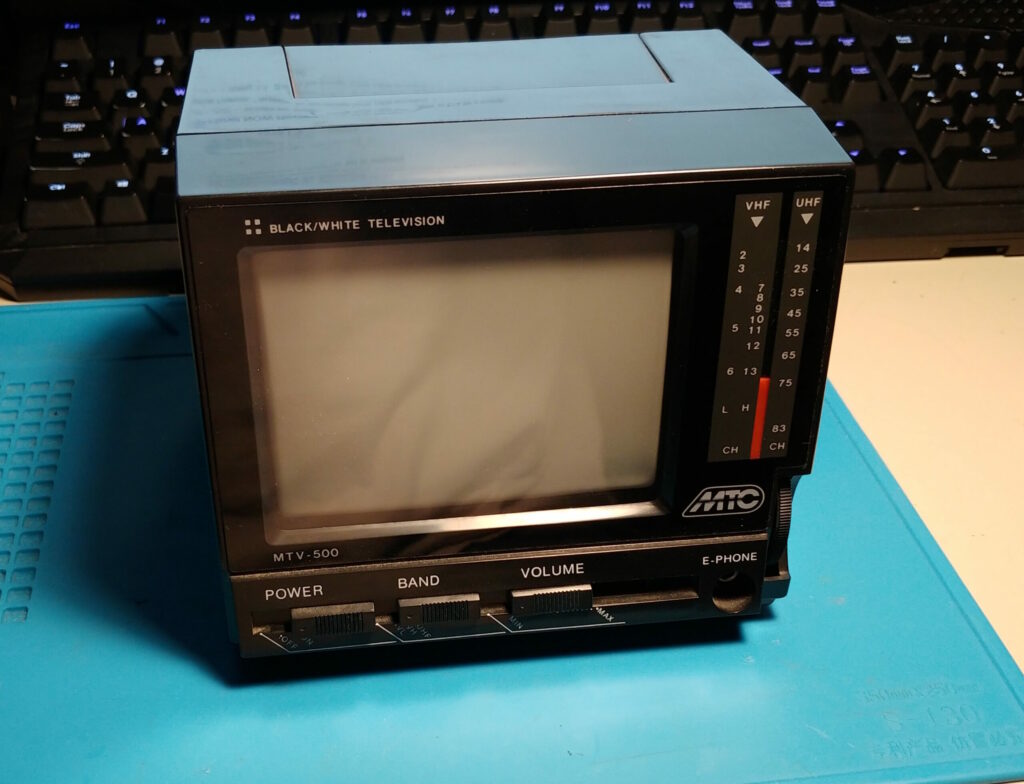
I picked up this barebones 5″ portable black and white CRT for $10 from FB marketplace some time ago. I’ve been looking for a miniature color CRT to add to my humble collection of cathode ray tube devices, but this is the next best thing for now. The brand MTC, or MTC Electronics Corporation Limited, seems to have been a Canadian corporation based out of Richmond, BC, responsible for importing consumer electronics into Canada and the US from the 1980s to early 2000s. From what I can tell they were involved in a substantial class action lawsuit for securities fraud in the 90s.
The TV itself is very basic. It has no audio/video inputs nor can it be run from batteries. There is a contrast and brightness adjustment on the rear, and an external antenna input. There were a few issues with it initially, the main ones being a finnicky power connection and no audio. The first was fixed by re-soldering the DC barrel jack the joints had cracked over time. The audio issue was caused by a shorted electrolytic capacitor in the audio circuit section. I replaced a few capacitors with what I had on hand and tested some of the larger electrolytic opting to leave them in as they tested fine.
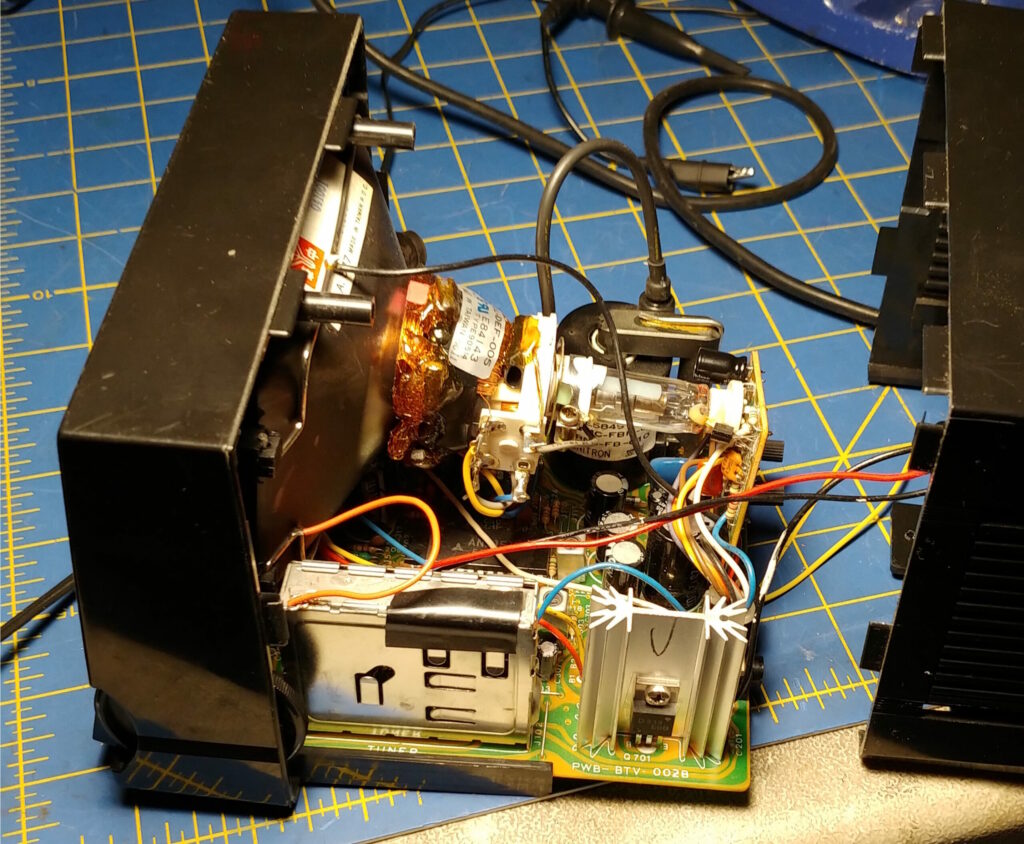
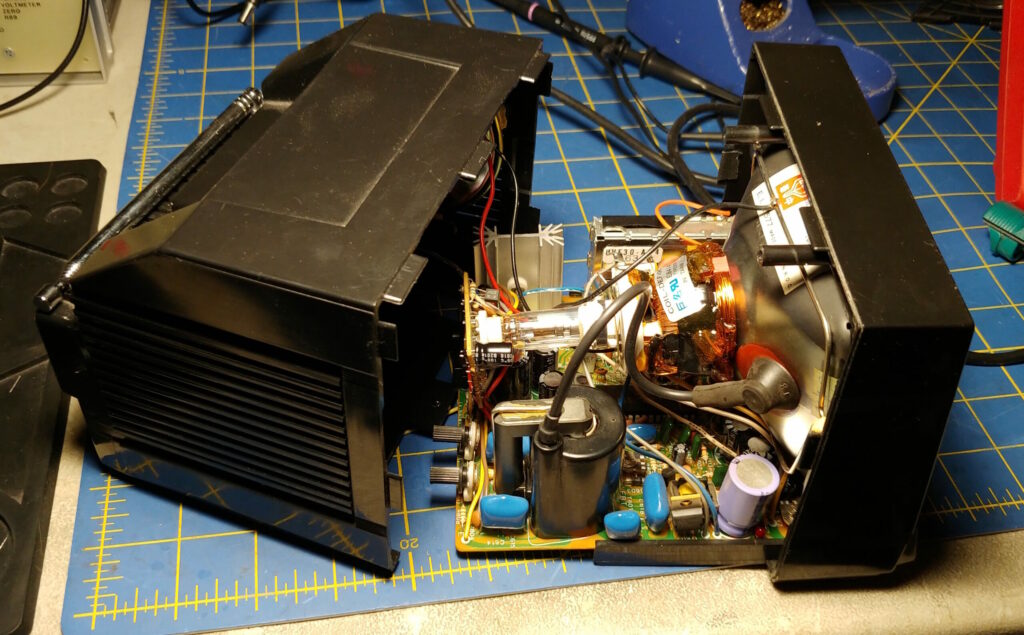
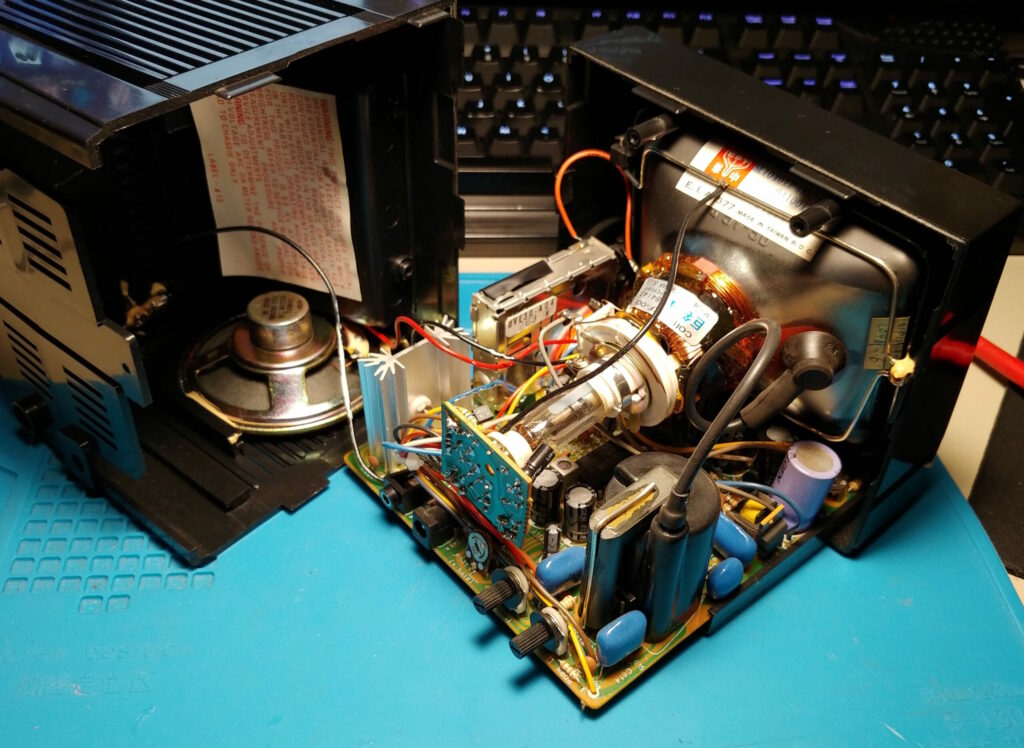
The next issue I wanted to address was adding some kind of audio/video input so I wouldn’t have to use an RF converter to get external video on this thing. The main analog decoder chip is an AN5151N, which decodes incoming RF broadcast signals into audio and video signals, and even generates the horizontal an vertical drive signals for the CRT itself. The datasheet, while being mostly Japanese, contains a nice application schematic which this TV seems to follow very closely.
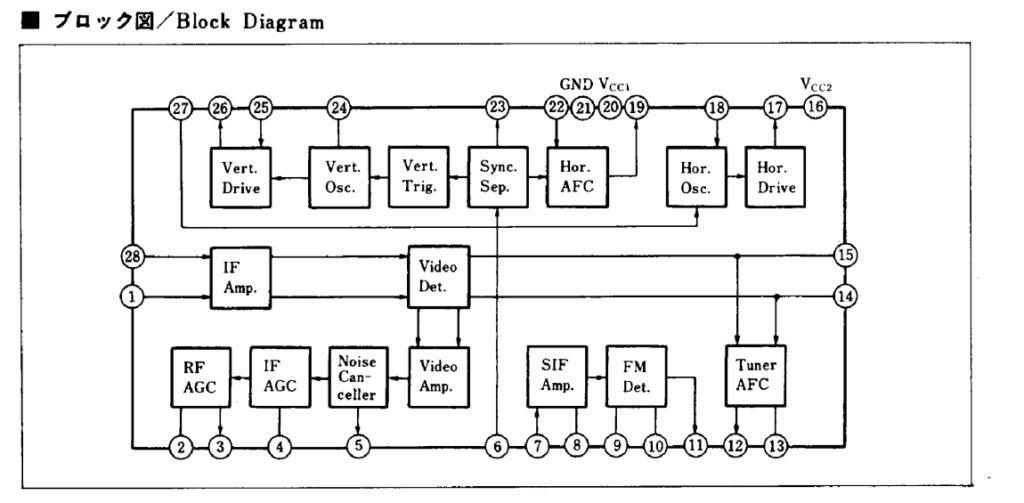

Tapping into the circuit to add composite video is trivial with this IC. The red X’s above indicate where to cut the traces on the PCB to disconnect the analog tuner circuits. The external composite video signal is then tied into circuit below the leftmost X, and the audio below the rightmost X. I removed the external antenna connector and soldered an AV cable directly to the empty through-holes, then cut a couple traces and jumped the video/audio signals across the board to the IC itself.

End results shown below. The vertical retrace lines are visible, the contrast isn’t great, the focus is questionable, the geometry is all over the place…but it does have that unique analog charm.




